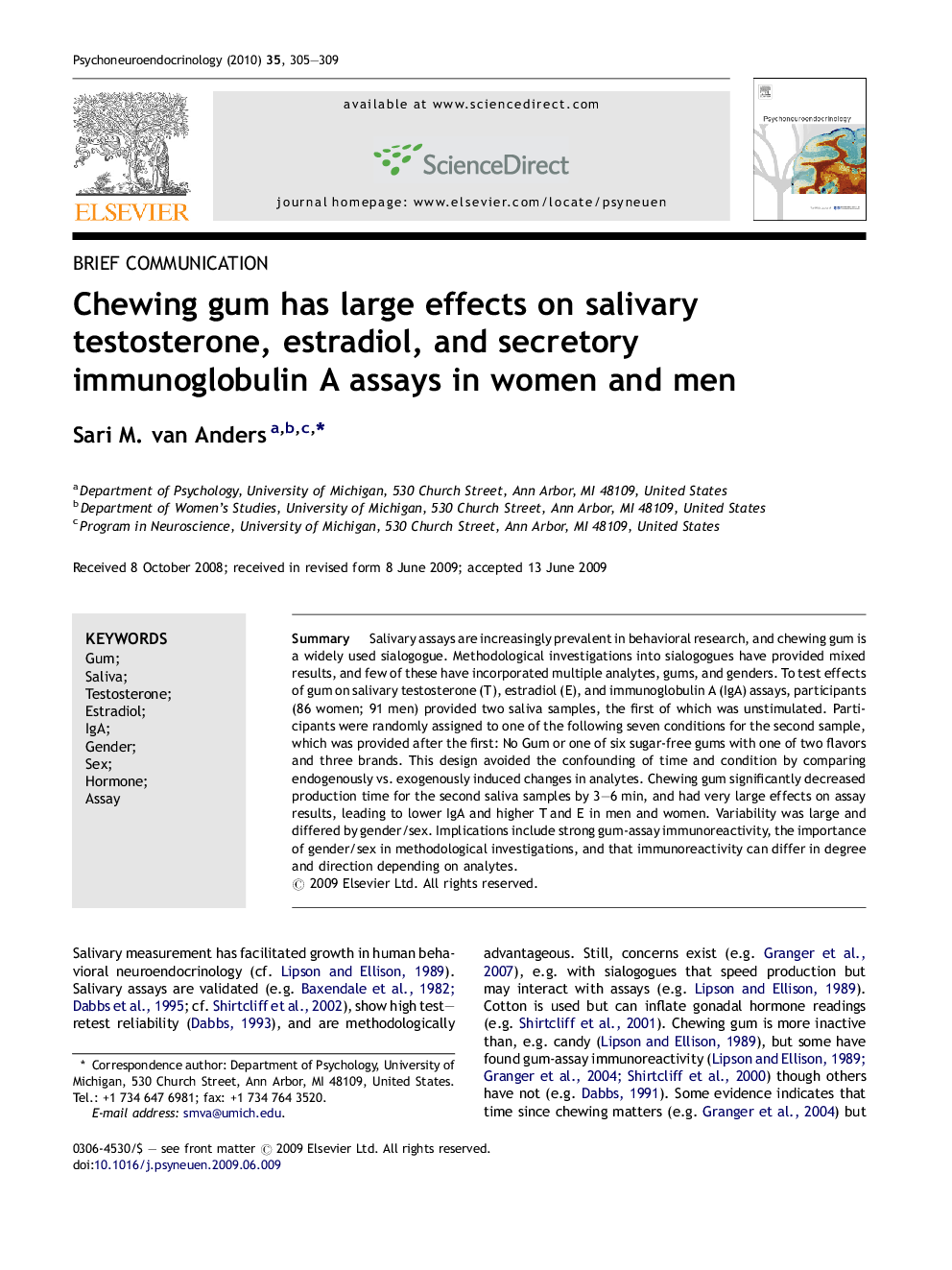| Article ID | Journal | Published Year | Pages | File Type |
|---|---|---|---|---|
| 336706 | Psychoneuroendocrinology | 2010 | 5 Pages |
SummarySalivary assays are increasingly prevalent in behavioral research, and chewing gum is a widely used sialogogue. Methodological investigations into sialogogues have provided mixed results, and few of these have incorporated multiple analytes, gums, and genders. To test effects of gum on salivary testosterone (T), estradiol (E), and immunoglobulin A (IgA) assays, participants (86 women; 91 men) provided two saliva samples, the first of which was unstimulated. Participants were randomly assigned to one of the following seven conditions for the second sample, which was provided after the first: No Gum or one of six sugar-free gums with one of two flavors and three brands. This design avoided the confounding of time and condition by comparing endogenously vs. exogenously induced changes in analytes. Chewing gum significantly decreased production time for the second saliva samples by 3–6 min, and had very large effects on assay results, leading to lower IgA and higher T and E in men and women. Variability was large and differed by gender/sex. Implications include strong gum-assay immunoreactivity, the importance of gender/sex in methodological investigations, and that immunoreactivity can differ in degree and direction depending on analytes.
